How to make ‘fireworks in a jar’ – cool science project for kids.

New Years Eve is fast approaching, and in Sydney, that means lots of spectacular fireworks. So to help build excitement (and prepare for the sensory overload), the kids and I did this fun ‘fireworks in a jar’ science experiment at home.
I first saw this idea on Kidspot, and it looked easy and fun, so I was surprised when our first four attempts failed! But we did succeed in the end, and at least now I can tell you what not to do. 🙂
Once you’ve got the hang of it, this is a fun science experiment that you can do again and again, using just everyday items you probably already have at home. (It could be a good one to have up your sleeve for those times when you’re stuck indoors…)
How to create ‘Fireworks’ in oil & water
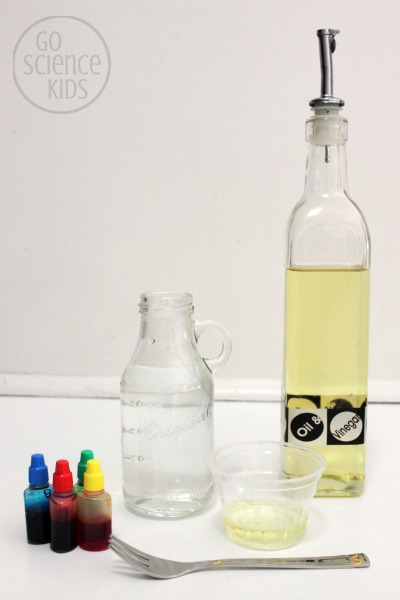
You need:
- Oil (we used light olive oil, but most light coloured cooking or household oils should work).
- Liquid food colour (with droppers)
- Glass containers (we used novelty bottles and an reused jam jar)
- Small cups
- Fork
- Warm water
1. Fill a glass container with warm water, leaving an inch or so at the top for oil to be added later.
I’m not 100% sure that warm water is necessary. I’ve heard reports that cold water works just fine, but we had too many failed attempts to muck around with varying this aspect. Maybe we’ll try experimenting with this next time…
2. Add oil to a small cup
We eye-balled few tablespoons of olive oil. Young kids can help pour, as there’s no need for exact quantities.
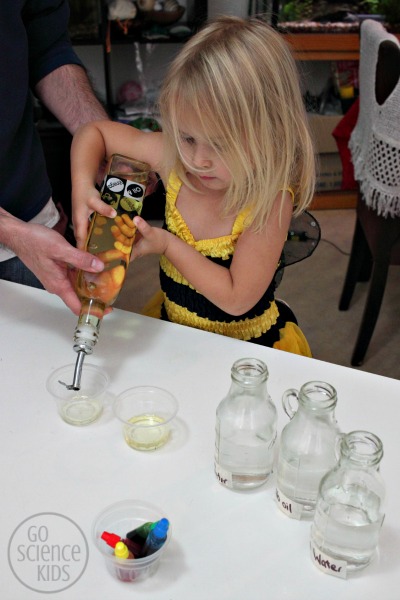
3. Add a few drops of food colouring to the oil.
With the food colouring, we found that less is more. Too much food colouring, and it tended to colour the water before the fireworks effect had begun. We had the best results when we used 2 drops of food colouring per colour, with about 2-3 colours each time. We tried several colour combinations, including green and gold (yellow) as these are Australia’s sporting colours. If you’re from the US, I think red and blue would also look great as ‘fireworks’ for the 4th July.

4. Use the fork to stir the oil and food colouring together.
The food colouring and oil won’t mix, but stirring helps to break up the food colouring into smaller droplets, and also ensures that the food colouring is thoroughly coated with the oil. (Try not to overdo it though, or your fireworks display won’t be as impressive.)
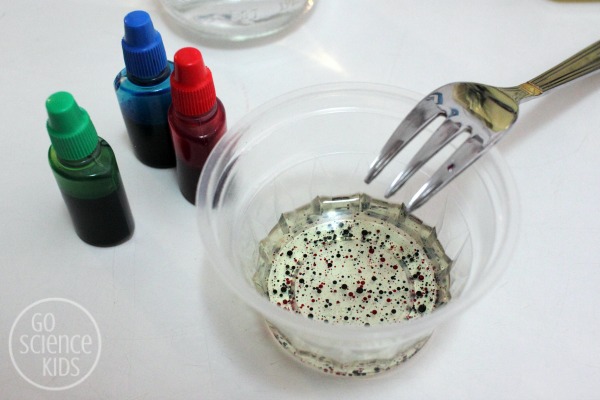
4. Gently pour in the oil so that it layers on top of the water, with the food colouring droplets suspended within the oil.
This is the section where we had been coming undone. Whenever we poured the oil in too quickly, it would stain the water before the experiment had begun (especially when we were too generous with our food colouring quantities). Through trial and error, we discovered it was better to add the oil slowly and gently, so that it layered on top of the water with the food colouring suspended in the oil.
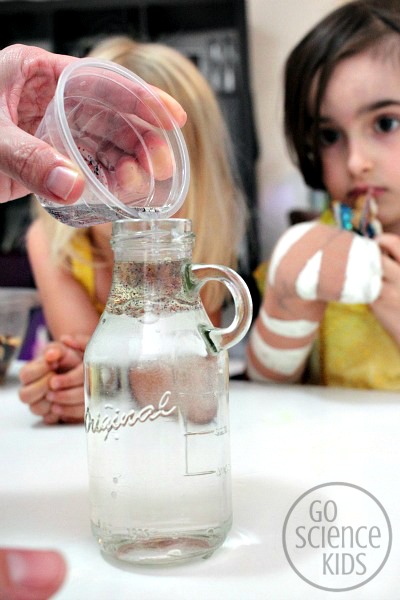
5. Watch your ‘fireworks’ science display!
The droplets of food colouring will start to drop and swirl though the water, creating a really colourful display that looks like it’s dancing!
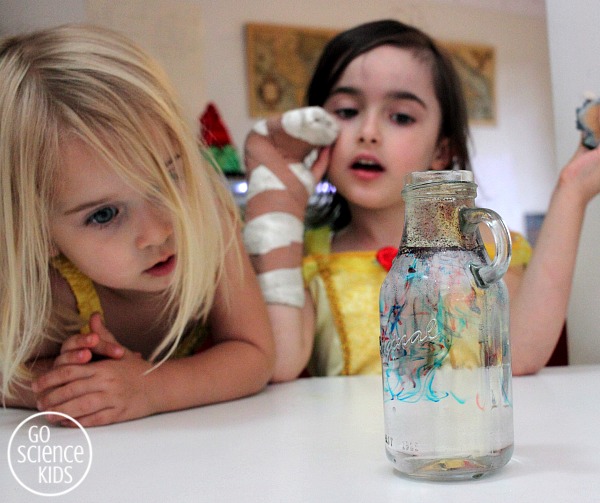
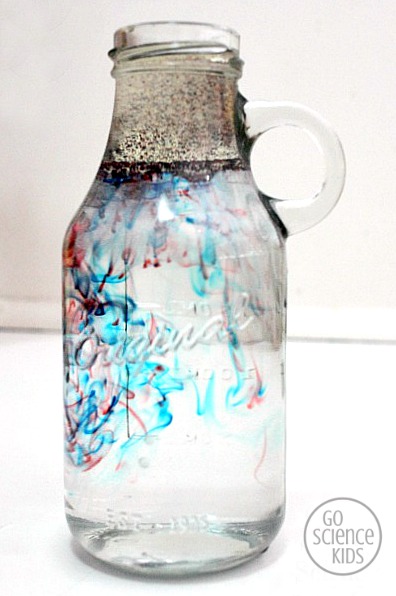
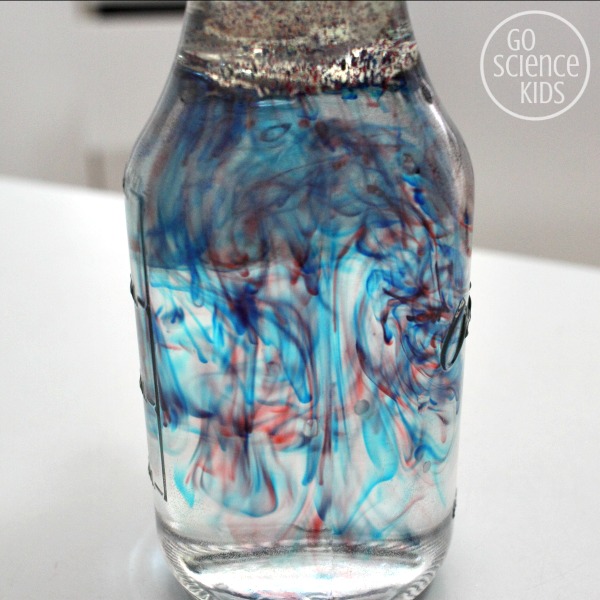
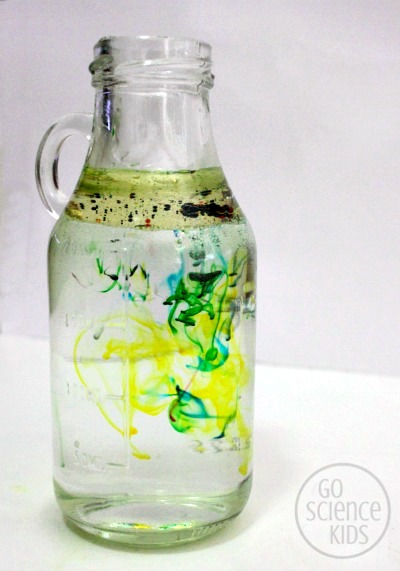
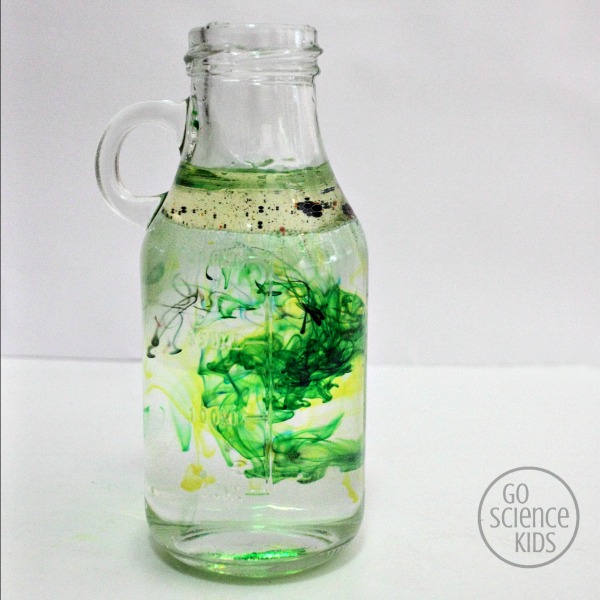

What’s going on here?
This experiment is all about density. Density is a measure of how much something weighs (it’s mass) by how much space it takes up (it’s volume).
Oil and water don’t mix (because the water molecules are more attracted to each other than the oil). Oil is also less dense than water, which causes the oil to float on top of the water, creating two distinct layers.
Liquid food colouring is water-based, which is why it doesn’t mix with the oil even when you stir it. Instead the food colouring breaks up into small droplets which become temporarily suspended (floating) within the oil. These droplets are denser than the oil (due to their water content), and so they gradually fall though the oil and enter the water. Some residual oil remains on the food colouring droplets as they enter the water, which slows the absorption of the colour, creating long trails that resemble fireworks.
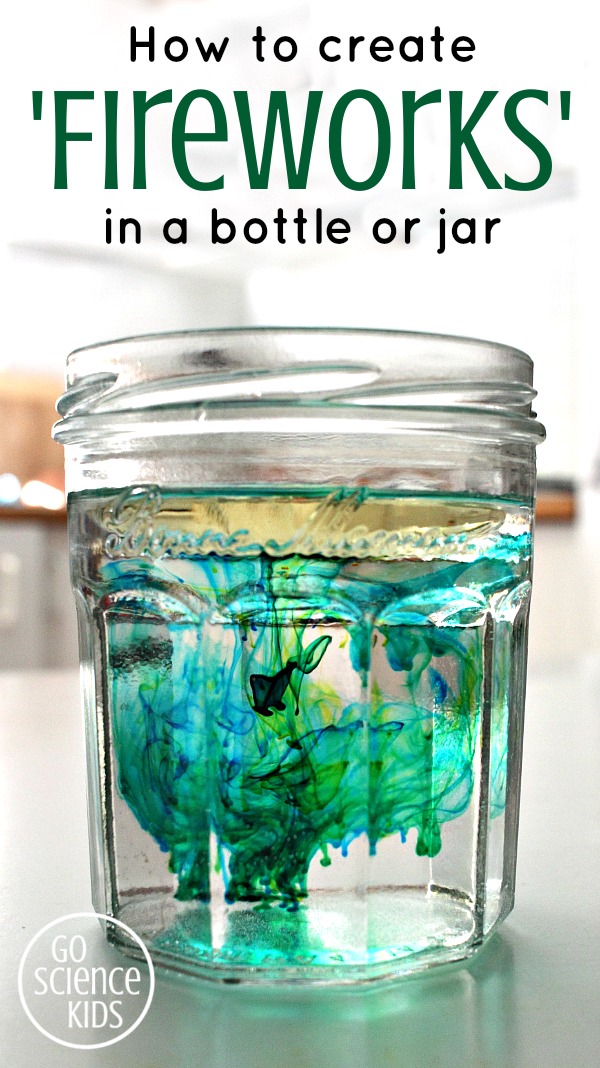
You could try experimenting with warm and cold water, or with different types of oils, and see if this makes a difference. I’d love to hear your results if you do!
PS: In case you’re curious, here is an out-take from one of our earlier failed attempts. See how the water stained immediately because we were pouring too vigorously / from too great a height?
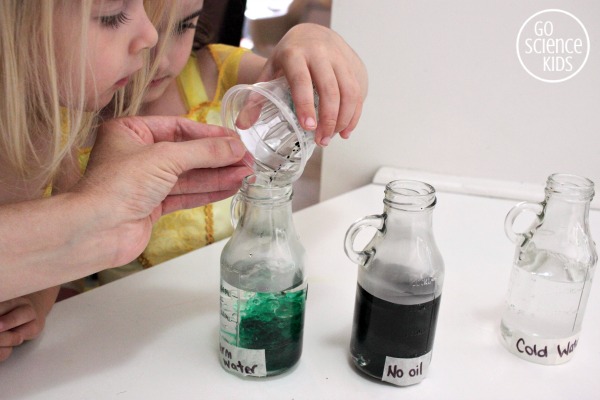
(And we even had a control sample, with our bottles all prettily labelled and everything. *sigh*)
* This post contains affiliate link(s) to similar products used. An affiliate link means I may earn advertising / referral fees if you make a purchase through my link without any extra cost to you. It helps to keep this little blog afloat. Thank you for your support.

#
So cool! Maybe this will be a substitute for real fireworks tonight.
And, out of interest, Scientific American tells me:
So why is the center of the Earth Hot? There are three main sources of heat in the deep earth: (1) heat from when the planet formed, which has not yet been lost; (2) frictional heating, caused by denser core material sinking to the center of the planet; and (3) heat from the decay of radioactive elements.
Love the blog!
#
Oh wow, that’s fascinating. I would never have guessed that. So nothing really (except for the frictional element) to do with pressure at all!
#
#
#
I tried this with great success yesterday with my 5-year-old granddaughter.
One thing we noticed was that the droplets of food coloring coalesced into round balls in the oil, and that stirring them resulted in many smaller balls. This reinforced the observation that oil and water don’t mix…
#
Awesome! Love it!
#
Hi there, we did this this weekend for my son’s (7yrs) oral presentation about a science experiment. We found that mixing the oil and food colouring before pouring it in was too complicated, especially since he’d have to demonstrate it in class himself. So what we did was we put water and then the oil (oil by it self doesn’t need too careful pouring). And then, we dropped in food colouring drops on top of the oil. we managed to put all the different coloured drops before they sank to the water and the ‘fireworks’ began. So it was cool.
We also did one round with cold water (not intentionally, lol). We observed that it took longer for the coloured drops to fall into the water, and even then, it slowed the effect of fireworks. We didn’t like it all that much. Also, we were intrigued to see that some colours dropped faster than others. Yellow was stubborn, blue was faster. My theory was that yellow had the least composition of water vs dye compared to blue (97.3% vs 98.7% in the colouring we were using), so was less dense and so took a longer time. This is just a theory. 🙂
But all in all, while we had fun watching the fireworks, I thought this had little educational value (other than water is more dense than oil). .. hmm.
#
#
#
#